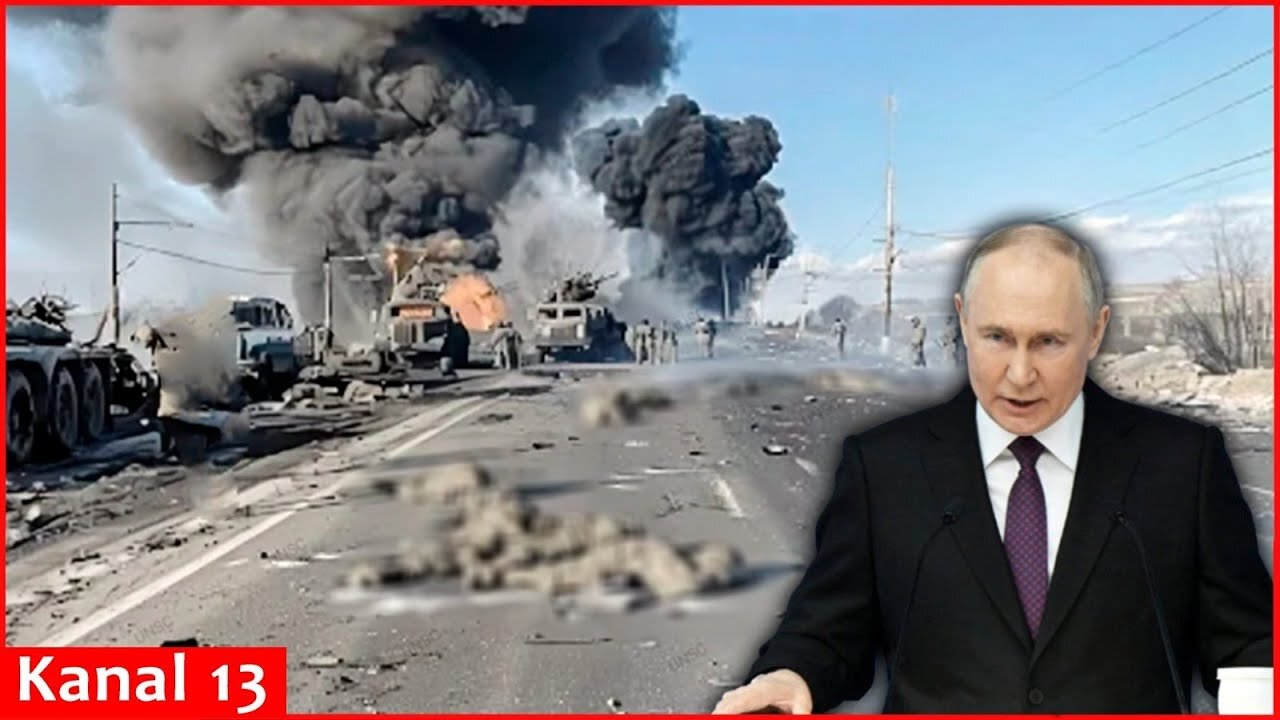Premium Only Content

Putin threw the army into a record number of 'meat assaults' after the start of ceasefire talks
The Russian army in Ukraine has sharply increased the number of assault operations after the start of ceasefire talks, which the Kremlin is conducting with the mediation of the United States.
During the period from March 1 to March 26, Russian troops carried out 17% more assault attacks than in the whole of February, according to the calculations of the Ukrainian OSINT project DeepState. During March 25-27, the Russian army carried out an average of more than 200 assaults every day - and this is a record since the beginning of 2025, DeepState notes .
The offensive is concentrated on the Kupyansk, Liman, Toretsk, Vremeevsk and Kursk sections of the front, and the most difficult situation, as DeepState writes, has developed near Pokrovsk, a key logistics center of the Ukrainian Armed Forces in the Donetsk region, through which Ukrainian forces in the region are supplied.
Russian troops have also intensified assaults in small groups in the Zaporizhia direction, Vladislav Voloshin, spokesman for the Defense Forces of the South of Ukraine, said on Friday. The offensive in the region, which the Russian Armed Forces currently control only 70%, began in early March, and in the middle of the month, according to z-war correspondents, the troops managed to break through the Ukrainian Armed Forces' defenses to a width of 10 km and a depth of 5 km and take control of several villages.
"The Russians want to get as much of a head start as possible, to advance as far as possible in the Zaporizhia region, if they can, even to reach the administrative borders of the region. This is one of the reasons why the situation in the south of Ukraine, and in particular in the Zaporizhia direction, is beginning to worsen somewhat,” Voloshin explained.
"Meat assaults" increase losses in the troops, which, according to British intelligence, reached 900 thousand people in March, including 200-250 thousand killed.
Currently, Russian troops are about 25 km from Zaporizhia, but the Ukrainian defense "lacks depth" to effectively contain a possible offensive, experts from the American Institute for the Study of War wrote earlier. The same, in their opinion, is the case on the Kharkov front and near key cities in Donbass, which could be under immediate threat if the defense "cracks."
In negotiations with the United States, Russia insists that all four regions of Ukraine - Donetsk, Luhansk, Zaporizhia and Kherson - come under its control within administrative borders, sources familiar with the position of the top leadership of the Russian Federation told The Moscow Times earlier. The Kremlin hopes that Washington may even put pressure on Kiev to completely withdraw troops from the regions occupied by Russia. Alternatively, Russia may try to seize part of another Ukrainian region, for example, Dnipropetrovsk or Sumy, and then offer an exchange for Kherson and Zaporizhia, one of The Moscow Times' sources said.
Opponents of the compromise in the Kremlin believe that before making a deal, Russia must first achieve military successes — liberate the Kursk region and “gnaw away” territories, sources told The Moscow Times
-
 8:10
8:10
MattMorseTV
15 hours ago $10.65 earnedDemocrats caught COLLUDING with Epstein.
12K38 -
 LIVE
LIVE
Lofi Girl
3 years agolofi hip hop radio 📚 - beats to relax/study to
849 watching -
 43:24
43:24
ThisIsDeLaCruz
1 day ago $7.62 earnedWhat Fans Never Knew About Falling In Reverse’s Guitarist
21.7K -
 14:57
14:57
The Pascal Show
1 day ago $3.49 earnedTHIS IS INSANE! Megyn Kelly SLAMMED For Questioning Whether Epstein Was a P*dophile?!
9.63K7 -
 55:46
55:46
PandaSub2000
1 day agoBeyond Good & Evil | ULTRA BEST AT GAMES (HD Edited Replay)
37.7K3 -
 1:53:29
1:53:29
Badlands Media
1 day agoDevolution Power Hour Ep. 407: Purity Tests, Psyops & the MAGA Identity Crisis
215K51 -
 2:31:03
2:31:03
Tundra Tactical
13 hours ago $15.31 earned🚨🚨LIVE AT 9PM CST!!! The Worlds Okayest Gun Show - 2A Mad Libs and Apocalypse Draft Night
45.4K1 -
 6:30:44
6:30:44
SpartakusLIVE
15 hours agoI’M BACK || ONLY Solos on WZ - NO BLOPS7, NO REDSEC, NO ARC, NO FRIENDS
145K4 -
 2:03:42
2:03:42
The Connect: With Johnny Mitchell
17 hours ago $11.43 earnedAmerican Vigilante Reveals How He Went To WAR Against The WORST Cartels In Mexico
27.3K2 -
 2:40:59
2:40:59
BlackDiamondGunsandGear
10 hours agoITS MA'AM!! / After Hours Armory / Are you threatening me?
34.5K7